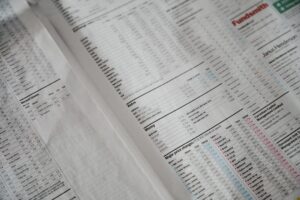Mastering Forex Trading: Advanced Techniques and Tools
Forex trading is a complex and dynamic market that requires constant learning and adaptation. As a trader, it is crucial to constantly improve your skills and knowledge to stay ahead of the game. In this article, we will explore advanced techniques and tools that can help you master the art of forex trading.
1. Understanding Technical Analysis:
Technical analysis is a key pillar of forex trading. It involves analyzing historical price data and using various indicators and chart patterns to predict future price movements. To master technical analysis, it is important to have a solid understanding of different types of indicators such as moving averages, oscillators, and trend lines.
Moving averages are used to identify trends and support/resistance levels. They smooth out price fluctuations and help traders identify potential entry and exit points. Oscillators, on the other hand, are used to identify overbought or oversold conditions in the market. Common oscillators include the Relative Strength Index (RSI) and Stochastic Oscillator.
Another important tool in technical analysis is trend lines. Trend lines help traders identify the direction of the market and potential areas of support and resistance. By connecting the highs or lows of price movements, trend lines provide valuable insights into market sentiment and can be used to make informed trading decisions.
2. Mastering Fundamental Analysis:
While technical analysis focuses on price movements, fundamental analysis delves into the underlying economic factors that impact currency values. To master fundamental analysis, it is crucial to keep track of economic indicators, news releases, and geopolitical events that can affect currency movements.
Some key economic indicators to watch out for include Gross Domestic Product (GDP), inflation rates, employment data, and central bank decisions. These indicators provide insights into the health of an economy and can influence currency values.
News releases and geopolitical events can also have a significant impact on currency movements. For example, political instability, trade wars, or unexpected events such as natural disasters can cause volatility in the forex market. Being aware of these events and understanding their potential impact can help traders make informed trading decisions.
3. Utilizing Risk Management Techniques:
Risk management is a crucial aspect of forex trading. Without effective risk management techniques, traders expose themselves to unnecessary losses and potential account blowouts. To master forex trading, it is important to implement risk management strategies that protect your capital and minimize potential losses.
One common risk management technique is setting stop-loss orders. A stop-loss order is an instruction to automatically sell a position if it reaches a certain price level. By setting a stop-loss order, traders limit their potential losses and protect their capital in case the market moves against them.
Another risk management technique is position sizing. Position sizing refers to determining the appropriate amount of capital to allocate to each trade based on risk tolerance and account size. By properly sizing positions, traders ensure that a single losing trade does not significantly impact their overall portfolio.
4. Utilizing Advanced Trading Tools:
In addition to technical and fundamental analysis, mastering forex trading requires the effective use of advanced trading tools. These tools can help automate trading strategies, provide real-time market data, and offer advanced charting capabilities.
One popular advanced trading tool is the use of automated trading systems or Expert Advisors (EAs). EAs are computer programs that can execute trades on behalf of the trader based on pre-defined rules. By using EAs, traders can eliminate emotions from their trading decisions and take advantage of market opportunities 24/7.
Real-time market data and news feeds are also essential tools for forex traders. By subscribing to reliable news services and using platforms that provide real-time data, traders can stay updated on market developments and make timely trading decisions.
Advanced charting capabilities are another important tool for forex traders. Platforms that offer advanced charting features such as multiple timeframes, custom indicators, and drawing tools can greatly enhance a trader’s ability to analyze price movements and identify potential trading opportunities.
In conclusion, mastering forex trading requires continuous learning and improvement. By understanding technical and fundamental analysis, implementing effective risk management strategies, and utilizing advanced trading tools, traders can enhance their skills and increase their chances of success in the forex market. Remember, practice and perseverance are key to becoming a master forex trader.






